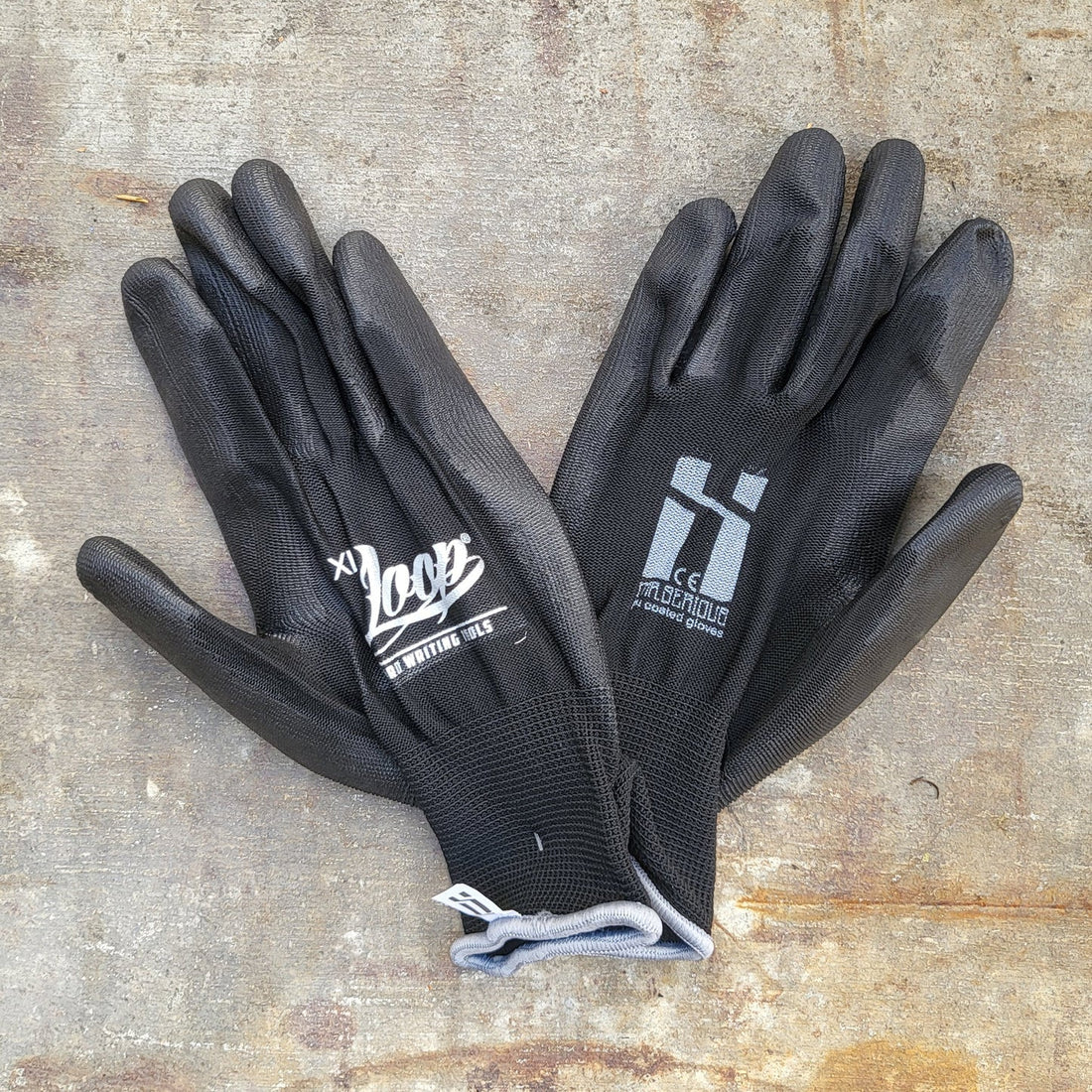
How to Store and Handle Spray Paint Safely
Spray paint is an incredible tool for artists and graffiti writers, but it also needs to be treated with respect. Cans are pressurized, paints are flammable, and solvents can be harmful if misused. Knowing how to store spray paint and handle it safely will not only extend the life of your cans but also keep you and those around you safe. In this guide, we’ll go over practical tips for storing your aerosol paint and important safety practices when handling and using spray cans. Whether you have a growing collection of cans at home or you’re about to head out for a painting session, these tips will help you maintain your gear and protect your health.
Proper Storage of Spray Paint
Storing spray paint correctly ensures your cans stay in good condition and reduces any risk of accidents. Here’s what to do:
-
Cool, Dry Place: Always keep spray paint in a cool, dry area. Extremes of temperature are the enemy. Heat can cause pressure build-up (in worst cases, cans can burst if they get extremely hot), and freezing cold can damage the paint quality or even make cans malfunction. Aim for a storage spot that stays between roughly 10°C and 25°C (50°F to 77°F) – basically normal room or mild garage temperature.
-
Avoid Direct Sunlight & Heat Sources: Don’t store cans in direct sun, near radiators, heaters, or in a hot car trunk on a summer day. Prolonged heat can weaken the can or cause leakage. Likewise, avoid placing them next to anything that sparks or flames (no storing by the boiler or a stove).
-
Upright Position: Store spray cans upright (standing on their base). This helps prevent valve clogging and leakage. If cans are left on their side or upside down for long periods, the paint can seep into the nozzle or gasket, causing clogs or pressure issues when you use them next.
-
Ventilated Area (or Cabinet): It’s best if the storage area has some ventilation, just in case a can leaks a bit of vapor. Many artists use a well-ventilated closet or a dedicated metal storage cabinet. If you have a lot of cans, consider a flame-resistant cabinet (especially in a studio or work environment) – this is a bit extreme for a casual user, but a good safety measure if you’re storing dozens of aerosol cans.
-
Out of Reach of Children/Pets: This might go without saying, but keep your stash somewhere that kids or pets can’t mess with it. A curious child could try to spray (making a mess or inhaling fumes), or knock a can into a dangerous spot. Treat spray paint like you would household chemicals when it comes to kid safety.
-
Rotate Stock: If you have many cans, try to use older ones first. Over very long periods, some cans can lose pressure or paint quality can change. Using older cans up ensures your paint supply stays fresh. (Pro tip: You can write the purchase date on the bottom of cans if you really want to track age.)
By following these storage tips, you’ll reduce the chances of your spray paint going bad or causing any unintended incidents at home. Well-stored cans will last years and work correctly when you need them.
Handling Spray Paint Safely
Handling spray paint isn’t just about not getting messy – it’s about protecting your health and preventing accidents. Here are key safety tips for using spray paint:
-
Wear a Mask or Respirator: Whenever you spray, especially indoors or in an enclosed space, wear a proper mask. An activated carbon respirator mask designed for spray painting is best (it filters out paint solvents and pigment particles). If you don’t have one, at least use a high-quality dust mask. The fumes from spray paint contain solvents that can irritate your lungs and are harmful over time – you don’t want to be inhaling that.
-
Use Gloves and Eye Protection: Disposable nitrile or latex gloves will keep paint off your hands and protect your skin from solvents (plus, no more scrubbing paint off later). It’s also smart to wear safety glasses, especially if you’re spraying above your head or in windy conditions – you don’t want paint mist or drips in your eyes.
-
Ventilation is Key: Always spray in a well-ventilated area. Outdoors is ideal. If you’re indoors, open windows and doors to create airflow, and use fans if possible to exhaust fumes. The goal is to avoid build-up of fumes, which are not only unhealthy to breathe but also flammable in high concentrations. Never spray in a tiny closed room without ventilation.
-
No Open Flames or Smoking: Spray paint fumes are flammable. Keep cans away from any open flame, and definitely do not smoke while painting. A single spark or cigarette ember could ignite paint vapors – leading to a flash fire. This also means if you’re spraying outdoors, maybe avoid doing it near someone’s BBQ or bonfire.
-
Mind the Caps and Nozzles: When handling your cans, keep track of the caps and nozzles. A clogged nozzle can sputter or pop off unexpectedly. Before spraying, make sure the nozzle is seated properly on the can. After spraying, it’s a good practice to clear the nozzle by turning the can upside down and spraying for a second until only propellant comes out – this prevents the tip from clogging for next time.
-
Avoid Puncturing or Dropping Cans: Never puncture a spray can or try to take it apart, even if it’s “empty.” Also handle them with care – dropping a can, especially on its head (valve), can cause it to malfunction or spray unexpectedly. In worst cases a punctured can could explode due to pressure. So treat your cans gently; they’re sturdy but not indestructible.
Personal Safety While Painting
Beyond handling the cans themselves, consider these personal safety measures when you’re out painting, especially for graffiti writers:
-
Be Aware of Your Surroundings: If you’re painting outdoors (legal wall or not), be mindful of the area. Make sure you’re not accidentally spraying towards other people or cars. Wind can carry overspray quite far.
-
Lighting and Ventilation in Tunnels or Indoors: If you’re painting in a tunnel or under a bridge (common graffiti spots), use a respirator and take breaks. The ventilation in such spots is often poor, and fumes can build up. Also consider bringing a light if it’s dark – you want to see what you’re doing to avoid accidents or tripping.
-
Keep Hydrated and Take Breaks: This might sound unrelated, but if you’re doing a long painting session, especially with a respirator on, you can get dehydrated or lightheaded. Take short breaks to step back, remove your mask in fresh air, and drink some water. Spray painting can be more physically taxing than it seems.
-
Have a First Aid Basic: It’s good practice to have a basic first aid kit or at least some eye wash solution in your car or bag. If paint does get in your eyes or a lot on your skin, you’ll want to rinse it off quickly.
Safe Disposal and Clean-up
Handling spray paint safely also means dealing with the leftovers properly:
-
Empty Cans: An “empty” spray can usually still has a bit of propellant and paint residue inside. Don’t throw it straight in the regular bin where it could be crushed or punctured. The safest method is to completely empty the can (spray out all remaining propellant outdoors on scrap cardboard, for example, until nothing comes out). Once it’s totally depressurized, many local councils consider empty aerosol cans as recyclable metal – check your local recycling rules.
-
Partially Full Cans: If a can has product left but you don’t want it, see if a fellow artist wants it. Do not dump the paint out or burn the can. If you must dispose of it, treat it as hazardous waste – meaning take it to a household hazardous waste facility or a recycling centre that accepts paint. It’s a bit of a hassle, but it’s the eco-friendly and safe way.
-
Paint on Skin or Surfaces: Use appropriate cleaners. For skin, specialized paint remover wipes or just some olive oil or skin-safe solvent can help remove paint (avoid harsh chemicals on skin). For surfaces, use graffiti remover products or solvents with caution, wearing gloves and ensuring ventilation.
-
Cleaning Nozzles: You can soak clogged spray caps in a little jar of mineral spirits or acetone to dissolve paint, then brush them clean. Having clean caps means safer handling next time (less chance of a cap sputtering or sticking).
Conclusion
Taking a bit of time to store and handle your spray paint safely goes a long way. By keeping your cans in a stable environment (upright in a cool, dry place) and following safety practices when you paint (protective gear, ventilation, careful handling), you’ll prevent accidents and health issues. Remember, even though spray paint is a fun medium, it contains chemicals and is stored under pressure – respect that and you’ll stay out of trouble. Now you can focus on your art with peace of mind, knowing your paint is in good shape and you’re protecting yourself and others. Stay safe and happy painting!
